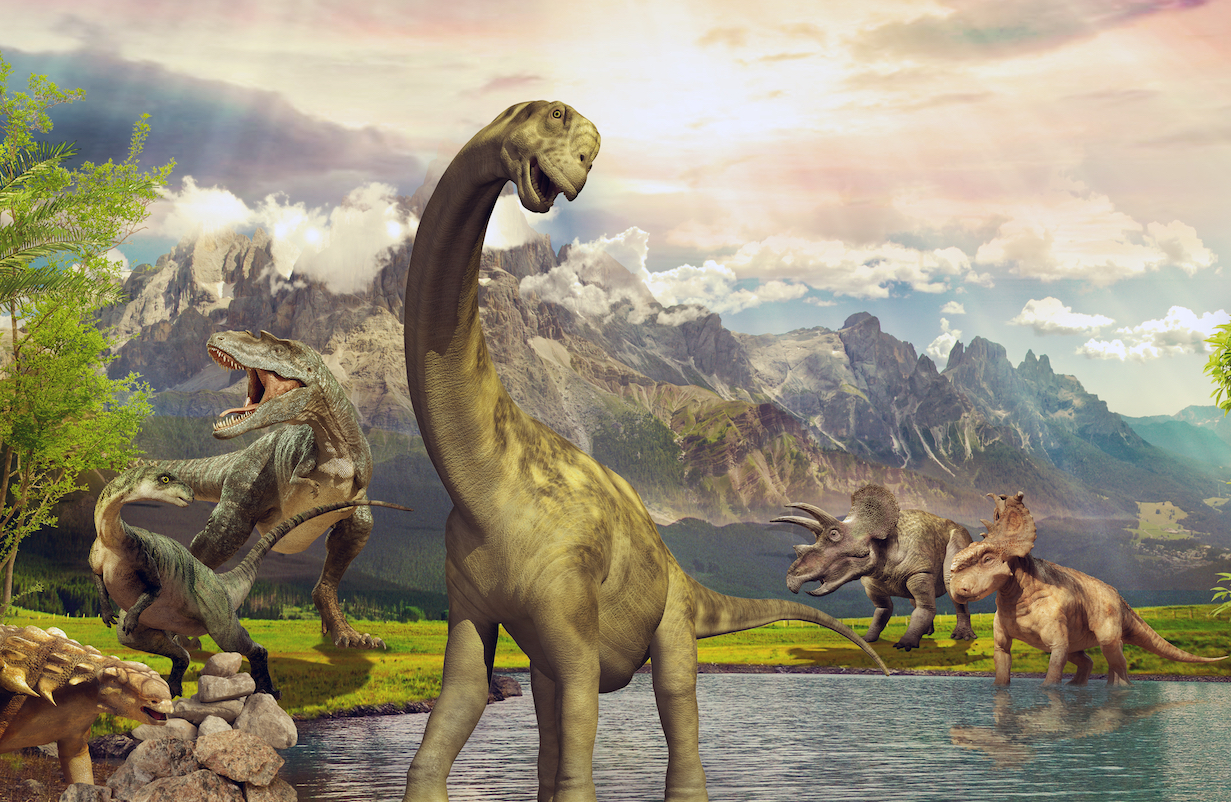
Increases in oxygen levels helped give rise to the dinosaurs
Increasing oxygen levels in North America gave rise to dinosaurs 215 million years ago, according to a new study.
Researchers from Rensselaer Polytechnic Institute in New York created a new method for measuring the compositions of gas trapped in carbonate minerals.
The researchers were able to measure the oxygen in ancient rocks with this new technique and assess the atmospheric concentrations of oxygen when dinosaurs first started to appear in North America.
A spike in oxygen over a three million year period correlates with the rise of dinosaurs in the North American fossil record, but the researchers still aren’t sure exactly what sparked this rise in air concentrations.
After analyzing small amounts of gas extracted from rocks from the Colorado Plateau and the Newark Basin with a spectrometer, the researchers found that oxygen levels increased by a third in a relatively short amount of time.
“Our results show that over a period of around 3 million years – which is very rapid in geological terms – the oxygen levels in the atmosphere jumped from around 15% to around 19%,” said Professor Morgan Schaller, the lead researcher for the study. “For comparison, there is 21% oxygen in today’s atmosphere. We really don’t know what might have caused this increase, but we also see a drop in CO2 levels at that time.”
When the gasses were trapped in the rocks, both the Colorado Plateau and the Newark Basin were near the equator and part of the supercontinent Pangea.
However, despite both regions being close to the equator, the areas were far enough apart that the researchers hypothesize that the increase in oxygen was a worldwide phenomenon.
“We expect that this change in oxygen concentration would have been global change, and in fact we found the change in samples which were 1000km apart,” said Schaller. “What is remarkable is that right at the oxygen peak we see the first dinosaurs appearing in the North American tropics, the Chindesaurus. The Sauropods followed soon afterwards.”
It’s important to note that there may be other factors influencing the rise of North American dinosaurs, Schaller added.
“Again, we can’t yet say if this was a global development, and the dinosaurs don’t rise to ecological dominance in the tropics until after the End-Triassic extinction,” said Schaller. “What we can say is that this shows that the changing environment 215 M years ago was right for their evolutionary diversification, but of course oxygen levels may not have been the only factor.”
The researchers presented their findings at the Goldschmidt Geochemistry Conference in Barcelona.
—
By Kay Vandette, Earth.com Staff Writer
Main Image Credit: Shutterstock/AmeliAU













